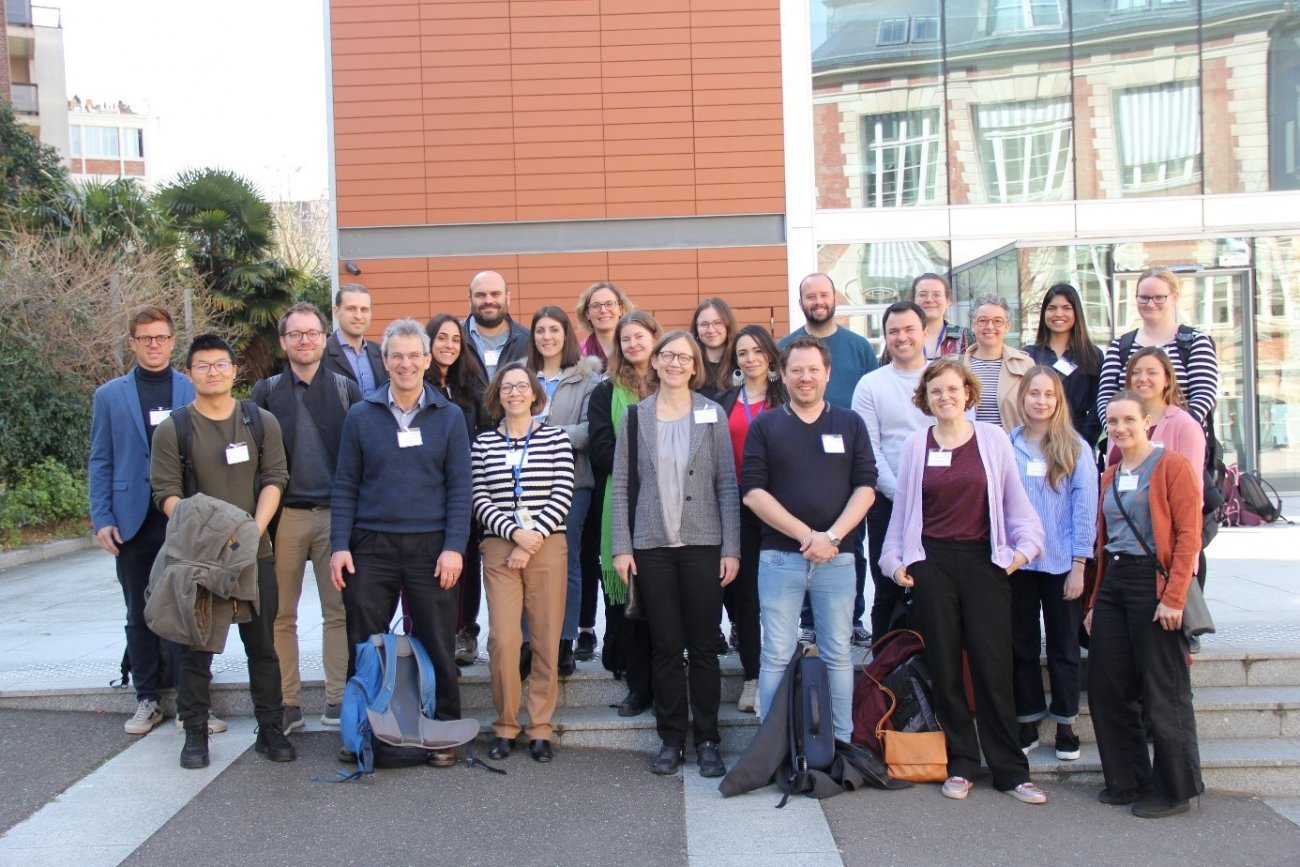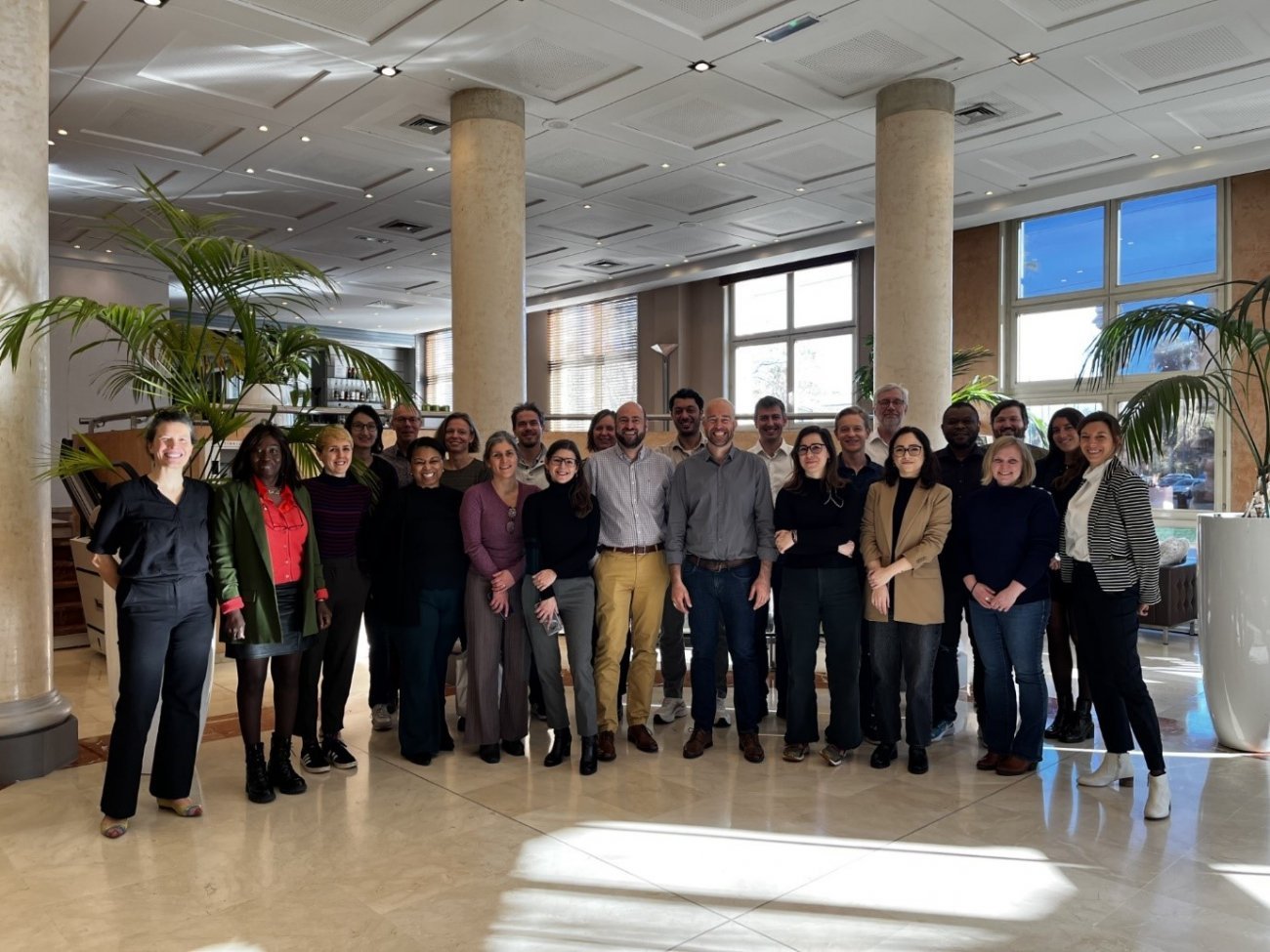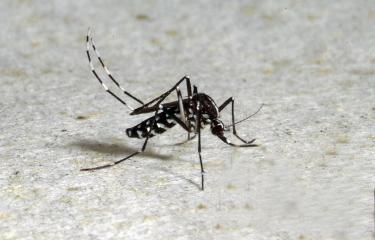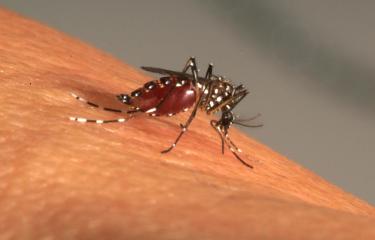The genus flavivirus includes several human pathogens, such as Zika, dengue, West Nile virus (WNV) and yellow fever virus, which persist as major threats to global public health. Yellow4FLAVI, coordinated by Giovanna Barba-Spaeth, Institut Pasteur, comprises 13 partner institutions and is supported by the European Union with with € 8 million. The aim is to use the 17D yellow fever vaccine as a model to understand the molecular basis of long-lasting immune protection.
Tackling vector-borne diseases
Climate change and urbanisation are the main causes of the global emergence of vector-borne diseases caused by flaviviruses. A disease is said to be vector-borne when a pathogen is transmitted to a host (human or animal) following a bite or sting from a vector, which can be of various kinds (mosquitoes, flies, ticks, fleas, etc.). Vector-borne diseases account for approximately 17% of all infectious diseases worldwide, and the WHO estimates that 80% of the global population is at risk from one or more vector-borne diseases. In response to this major threat, the Institut Pasteur has decided to create a center dedicated to these issues. Scheduled to be completed by mid-2028, the building will house more than 180 scientists and provide state-of-the-art technological and imaging tools.
No specific antiviral therapies exist to treat flavivirus infection. Vaccination is currently the most effective instrument to control their circulation. However, only a few licensed vaccines against flavivirus are available on the market, and some of them are limited to only a subset of the target human population (age limit, pregnancy or immune status). This is why the European Commission has committed to funding several large-scale research projects, with the aim of designing safer, more effective vaccines targeting multiple flaviviruses.
Yellow4FLAVI, Institut Pasteur coordinates an interdisciplinary consortium
The consortium of the EU-funded project "Deconstructing the protective immunity of yellow fever virus 17D to inform flavivirus vaccine design" (Yellow4FLAVI) kicked of on the Institut Pasteur campus in Paris on March 21 and 22, 2024.
Twelve European partner institutions (in 7 different countries) and one non-European partner (Colombia) are mobilized to fill the gaps in our understanding of the mechanism of action of today's most effective vaccine, the yellow fever 17D (YF17D). By linking the structure of the viral particle to the resulting host immune response, the consortium aims to unravel critical aspects of vaccine immunogenicity, using state-of-the-art technologies, and thus provide a context for a more general archetype of vaccine design for flaviviruses in general.

Since social acceptance of vaccines is critical for their success, the project also develop optimal communication methods.
The Yellow4FLAVI project brings together an interdisciplinary consortium. It combines the complementary expertise of its leading partners in molecular and structural virology, cell biology, innate and adaptive immunology, clinical immunology and social sciences and humanities (SSH). The project is supported by the European Union with €8 million. It has received funding from the European Union's Horizon Europe research and innovation program under the grant agreement GA 101137459.
Dr. Giovanna Barba-Spaeth, group leader of the "FlavImmunity group" in the laboratory Structural Virology at Institut Pasteur in Paris and Project Coordinator says :
YF17D is an old vaccine with a proven record of safety and efficacy after one single injection. However, we still do not understand the molecular determinants at the basis of the vaccine’s immunogenicity. Our consortium gathers a diverse group of expertise (including several non-virologist) that using cutting-edge technologies propose new approaches to decode the immunogenicity of this vaccine. We will focus on the role of the viral particle structure in presenting protective epitopes and will analyze the host response from the site of injection to the systemic induction of long-term immunological memory. Our study will also look into the impact of vaccination at the population level addressing vaccine hesitancy and developing risk communication strategies to render vaccination accessible and acceptable.
We are very pleased that the European Commission has recognized our efforts in building a complementary consortium with the goal to learn from an old vaccine how to design new, much needed vaccines against flaviviruses.
The project partners are : Institut Pasteur Paris IP (France), Ludwig Maximilians University LMU (Germany), KLINIKUM DER UNIVERSITAT MUNCHEN (affiliated entity) KUM (Germany), University Hospital of Erlangen UKER (Germany), Istituto Zooprofilattico Sperimentale Teramo IZS (Italy), University of Padova UNIPD (Italy), Centro Internacional de Entrenamiento e Investigationes Medicas CIDEIM (Colombia), Rega Institute KU Leuven (Belgium), University of Turku UTU (Finland), Charite - Universitätsmedizin Berlin (Germany), Amsterdam Institute for Global Health & Development AIGHD (Netherlands), ImmuneWatch IW (Belgium),INSERM/IC (Institut Cochin) (France).
For further information: www.yellow4flavi.eu
Project contact: giovanna.barba-spaeth@pasteur.fr
FLAVIVACCINE, for the development of a pan-flavivirus vaccine
January 1, 2024 saw the start of the FLAVIVACCINE project, also funded by the European Commission, to develop a candidate pan-flavirius vaccine, in other words, for a range of flaviviruses. Coordinated by the Institut de Recherche pour le Développement (IRD), this project involves a number of research centers, including the Institut Pasteur with James Di Santo's "Innate Immunity" research unit. The latter will be responsible for validating vaccine candidates using its humanized mouse models.
The innovative approach of the FLAVIVACCINE project consists in focusing on the initial infection resulting from contact with mosquito saliva, rather than directly on the viruses. This would enable protection against several diseases with a single vaccine. The 48-month project covers the defining of the immunogenicity of the target, the development and characterization of the vaccine, and finally the preparation of a clinical evaluation.
Coordinated by IRD in France, this initiative is an international collaboration with Universiteit Utrecht in the Netherlands, Agencia Estatal Consejo Superior de Investigaciones Científicas (CSIC) in Spain, and The Geneva Foundation (GF) in the USA, NORCE Norwegian Research Centre in Norway, Fondazione ICONS in Italy, Commissariat à l'Énergie Atomique et aux Énergies Alternatives (CEA) in France, The Regents of the University of California in the USA, the Institut Pasteur in France and ConserV Bioscience (CVB) in the UK.


Funded by the European Union. Views and opinions expressed are however those of the author(s) only and do not necessarily reflect those of the European Union or European Health and Digital Executive Agency (HADEA). Neither the European Union nor the granting authority can be held responsible for them.





